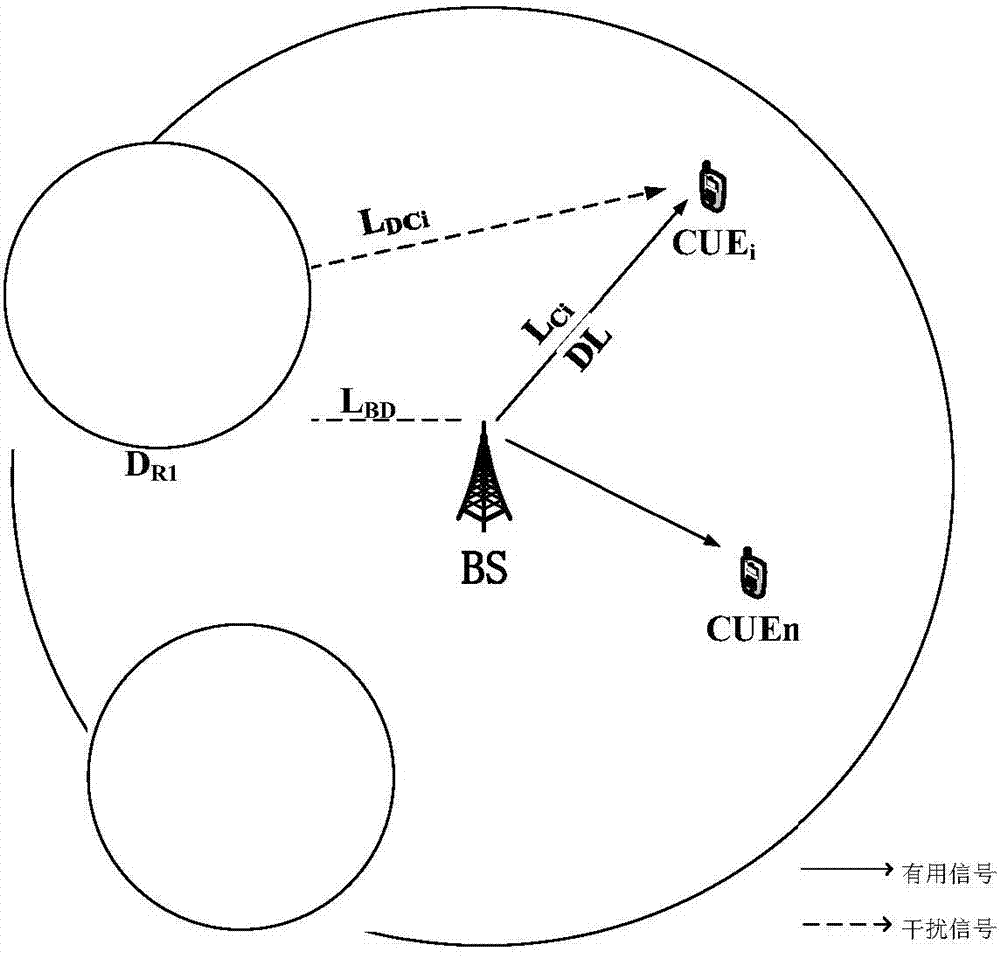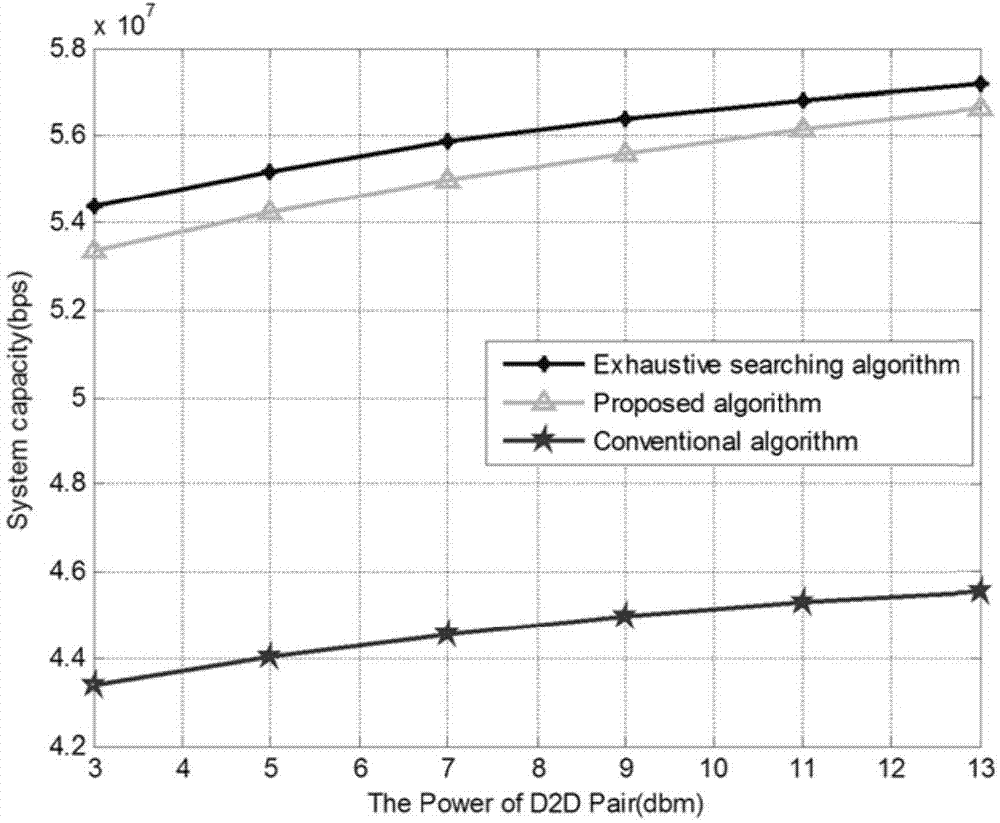Downlink frequency spectrum resource distribution method with D2D technology introduced in cellular network
A spectrum resource allocation and spectrum resource technology, applied in the field of spectrum resource allocation, can solve the problem of low resource utilization efficiency, reduce mutual interference, improve system spectrum efficiency, and reduce algorithm complexity
- Summary
- Abstract
- Description
- Claims
- Application Information
AI Technical Summary
Problems solved by technology
Method used
Image
Examples
Embodiment Construction
[0025] The present invention is described in further detail below in conjunction with accompanying drawing:
[0026] In order to facilitate understanding, the present invention takes the D2D communication network under the LTE-A system as an example to describe the introduction of the D2D technology into the cellular network.
[0027] The present invention will be described in detail below in combination with simulation and accompanying drawings. Concretely comprise the following steps: Step (1): the determination of interference limited area (ILA)
[0028] in the system model figure 1 , User D T with D R Establish a D2D communication link between CUE 1 , CUE 2 ,..., CUE n For cellular users, the base station BS allocates downlink spectrum resources for the D2D link. According to the LTE system requirement index defined by 3GPP TR25.913, a single cell occupies a system bandwidth of 20MHz, and each cellular user occupies t basic resource blocks (180KHz) (t =1,2,3,...,n)....
PUM
 Login to View More
Login to View More Abstract
Description
Claims
Application Information
 Login to View More
Login to View More - R&D Engineer
- R&D Manager
- IP Professional
- Industry Leading Data Capabilities
- Powerful AI technology
- Patent DNA Extraction
Browse by: Latest US Patents, China's latest patents, Technical Efficacy Thesaurus, Application Domain, Technology Topic, Popular Technical Reports.
© 2024 PatSnap. All rights reserved.Legal|Privacy policy|Modern Slavery Act Transparency Statement|Sitemap|About US| Contact US: help@patsnap.com










